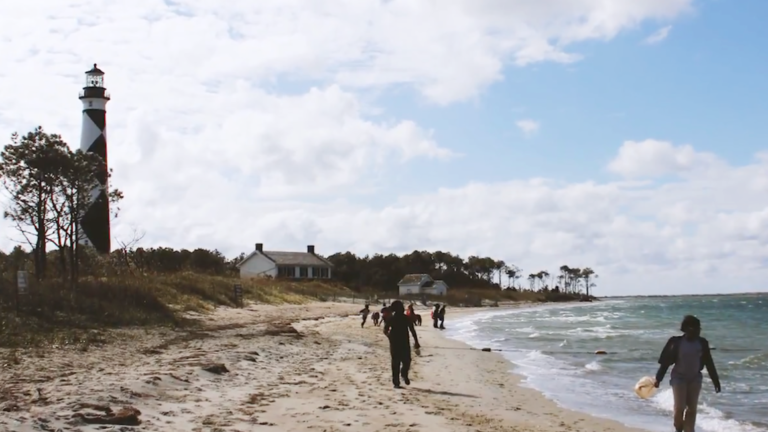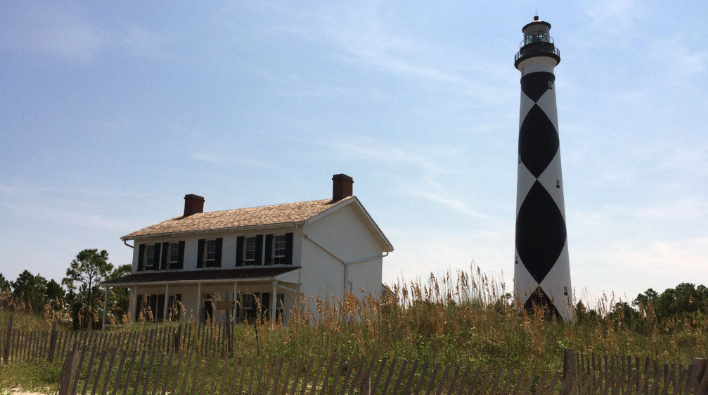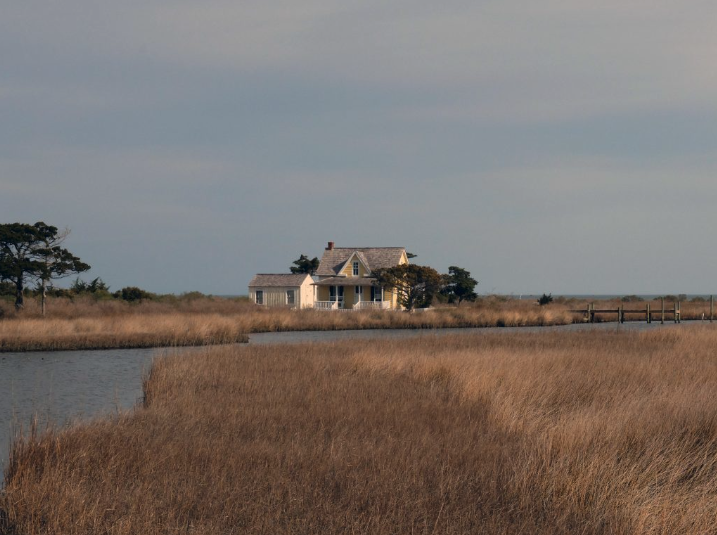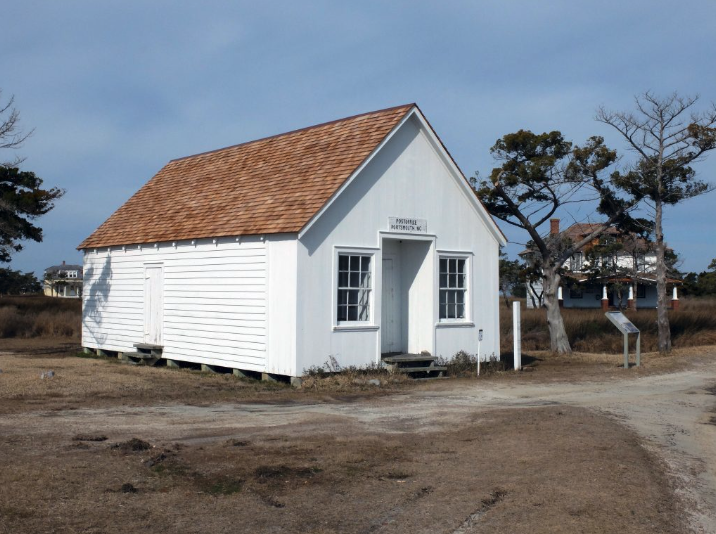Optimizing Cultural Resource Preservation Under Climate Change

NC State PI, Erin Seekamp, SE CASC Research Ecologist Mitch Eaton, and SE CASC researchers Xiao Xiao, Sandra Fatoric, Max Post van der Burg, and Allie McCreary have just released two publications that summarize research from the SE CASC project, Protecting Cultural Resources in the Face of Climate Change. The following summary was written by D’Lyn Ford for NC State University News; the original post can be viewed here.
Cape Lookout Research Could Help National Park Managers

It’s not easy to manage a national park like North Carolina’s Cape Lookout National Seashore, a 28,000-acre site with an iconic lighthouse, windswept beaches and many historic structures. In addition to day-to-day decisions for 400,000 annual recreational visits, park managers have to make long-term plans to protect historic resources from demanding coastal conditions in a changing climate with limited budgets.
To help with long-term preservation decisions, researchers with North Carolina State University, the U.S. Geological Survey and the National Park Service collaborated on a decision support model for Cape Lookout.
The Optimal Preservation Model (OptiPres) factors in the vulnerability and significance of historic and cultural resources, while allowing managers to adjust their plans based on varying funding levels, says Erin Seekamp, associate professor and tourism extension specialist with NC State’s Department of Parks, Recreation and Tourism Management.
“The model’s decision-making framework is the first that we know of that actually considers the costs associated with preservation and budget allocation scenarios, in the case of climate adaptation specifically, to help inform decision-making,” says Seekamp, lead author of a joint U.S. Geological Survey/National Park Service report on pilot testing at Cape Lookout and co-author of a related article in Land Use Policy.
The model is meant to give managers a tool to use in combination with input from stakeholder groups and policy makers.
Researchers met with park managers and state historic preservation officers, and consulted with heads of National Park Service programs while developing the model from 2015 to 2017. They created a detailed inventory of the historic structures at Cape Lookout and selected 17 buildings for the pilot project that factored in the buildings’ location, significance, condition, vulnerability and use.
The goal was to go beyond a static list of prioritized projects, says Mitch Eaton, research ecologist with the U.S. Department of Interior’s Southeast Climate Adaptation Science Center and an adjunct faculty member in applied ecology at NC State.

“One of the most important ideas in creating the model was to help managers think of historic and cultural resources in terms of a portfolio of assets that they’re managing because of the collective value they provide to the park, rather than on an individual basis,” Eaton says. “A model can help plan for and respond to changes because it’s dynamic and has the ability to include long-term forecasting.”
OptiPres uses an algorithm that can help managers prioritize projects and visualize the impact of a range of decisions over a 30-year planning horizon. The decision support model can help agencies make the case for additional funding to protect and preserve resources vulnerable to coastal flooding and inundation, Seekamp says.
“Heritage preservation typically operates on the notion that we must save everything, while the list of significant resources on the National Register of Historic Places grows,” Seekamp adds. “But funding for continual maintenance of listed properties has been woefully insufficient for decades.”
At Cape Lookout the team ran multiple simulations using the model, showing management options and resource preservation. The first simulation was for no action over the next 30 years. Others considered options with annual budgets of $50,000, $222,000 and $500,000.

Under the $222,000 budget, foregoing annual maintenance on some buildings provided enough savings for more expensive options, such as moving vulnerable structures to higher ground. However, Seekamp noted that although the model can calculate the cost and outcomes of relocating buildings, it can’t account for the fact that it might not be a viable option because of opposition to the idea from those with strong ties to the site.
“Although we are pleased with the model, we know it has many limitations,” Seekamp says. “We are trying to increase its robustness while clearly communicating that it was not developed to be a prescriptive tool.”
Researchers are testing the model’s transferability to other sites, says Catherine Hawkins Hoffman, chief of the National Park Service’s Climate Change Response Program, which supported the work in conjunction with the Southeast Climate Adaptation Science Center.
“We’re learning a lot in using this as a tool in development,” Hawkins Hoffman says. “I know from personal experience from 38 years working in national parks that managers face a constant challenge to balance daily needs with long-range planning. We’re testing the model in other locations and exploring both how to make it transferable to other parks, as well as simple to use in supporting maintenance and management decisions.
“In the future, we’d like to be able to use the model not only to assist parks in managing historical assets but also potentially for archaeological sites as well,” Hawkins Hoffman says.
Seekamp is working with the National Park Service to develop a process for prioritizing management actions and investments to protect vulnerable archaeological resources. In addition, she’s seeking ways to apply the model to climate adaptation within World Heritage Sites while on sabbatical at ICCROM, an international center for the study of cultural resources based in Rome.
The report, “Optimizing Historical Preservation Under Climate Change–An Overview of the Optimal Preservation Model and Pilot Testing at Cape Lookout National Seashore,” is available online. Co-authors are Max Post van der Burg, Northern Prairie Wildlife Research Center research ecologist with USGS; Sandra Fatorić formerly with NC State; Mitchell J. Eaton, Southeast Climate Adaptation Science Center ecologist with USGS; Xiao Xiao, formerly with NC State; and Allie McCreary, formerly with NC State.
The article, “Optimizing historic preservation under climate change: Decision support for cultural resource adaptation planning in national parks,” appears in the journal Land Use Policy. Xiao is the lead author. Seekamp, Post van der Burg, Eaton, Fatorić, and McCreary are co-authors.
- Categories:
